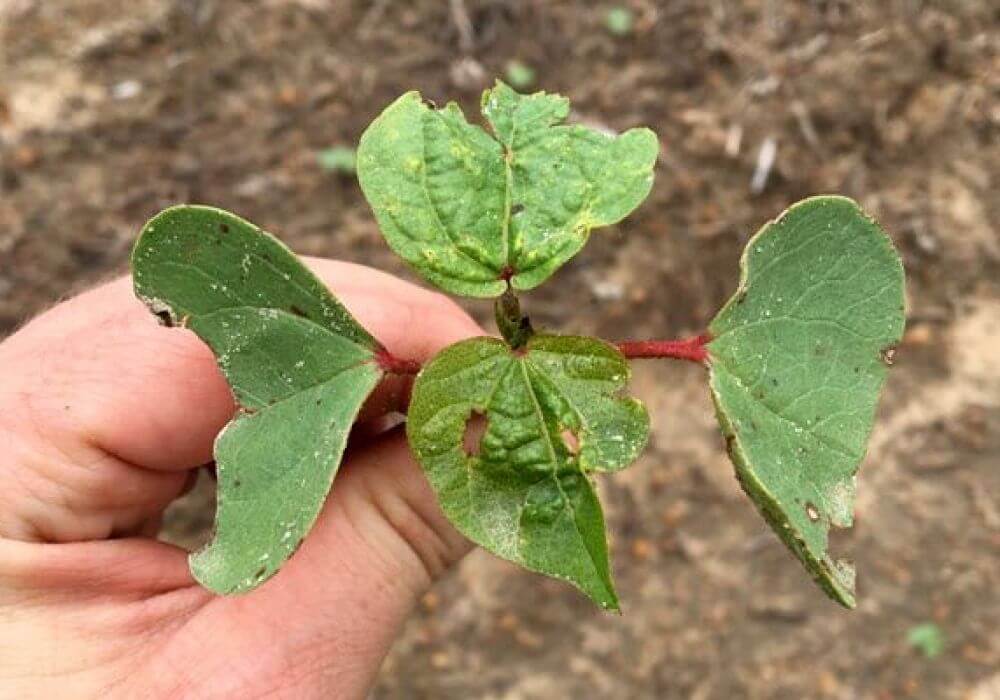
Photo: Andrew Sawyer, University of Georgia
April 23, 2020
From a Press Release
It’s not too late to factor in the value of earliness when it comes to at-planting inputs.
As growers race into the 2020 planting season, there is still time to make last minute decisions that will affect the entire growing season, according to Jack Royal with Royal’s Ag Consultant Co. in Leary, GA.
“It’s not too late,” Royal says. “Even at-planting inputs are still up for consideration. Keep in mind that at-planting inputs will quite certainly affect crop development and performance throughout the entire season and especially the early season kick-off.”
While most decisions such as variety selection have already been made, other inputs such as at-planting pest control options are still on the table. Protecting the emerging seedling from the moment of planting can help minimize pest control issues that often occur as early as the cotyledon stage if not earlier.
Prior to emergence, the first threat is invisible. Nematodes are an insidious, destructive attacker from the moment the seed hits the furrow. Root-knot, reniform, sting and other nematodes can wreak havoc on emerging seedlings, setting the crop back before it even emerges.
Enter the second line of attack – thrips.
“The problem with thrips is they attack early after emergence,” Royal says. “If you’re relying on a spray program to control thrips, you’re already behind the eight-ball. They’re already attacking before you can get a sprayer in the field. Additionally, there are multiple other operations across most farming operations that need to be addressed at the same time. Sometimes, it comes down to which fire to put out first.”
Early season pest control has popularized at-planting inputs. In recent years, growers have benefited from a few additions to the at-planting market. One of the more recent introductions has been a reintroduction of aldicarb. Marketed for more than 40 years under the brand name Temik, the product reappeared in 2016 – after a six-year hiatus – as AgLogic™ aldicarb.
“It’s been a welcome addition,” Royal says. “It has both nematode and thrips protection and addresses the problems we were starting to see with resistance to seed treatments.”
In addition to pest protection, earliness is another factor often overlooked.
“There’s no doubt you can see it in almost every year we’ve evaluated it,” says Ron Smith, Auburn Alabama University Cooperative Extension. “There’s no scarcity of data over the years – from early season thrips assessment, damage ratings to white bloom counts – that establishes that benefit.”
Other benefits also factor into the equation, according to Dr. Jeremy Greene, Professor of Entomology, Clemson University, Edisto Research and Education Station, Blackville, SC.
“In 2019, AgLogic™ was one of the best performing treatments in the trials,” he says. “Although we didn’t see any differences in yield in 2019, the benefits of protecting the crop early were readily apparent with less thrips and earlier established canopies. In the absence of increased yield, these benefits can still lead to earlier maturity and less weed pressure.”
The balancing act is always an issue of cost vs. return and risk vs. reward. All at-planting inputs require an up-front investment. In a time of uncertainty complicated by a global pandemic, ever-evolving international trade agreements and fluctuating futures prices, the analysis can often seem daunting. Recent upward ticks in cotton futures are fueling a cautious optimism that ease these concerns somewhat.
Regardless of market fluctuations, one constant remains. “We don’t have to prove what aldicarb contributes to cotton or peanut production,” Royal says. “After almost 50 years, we already know. That six-year absence from the market made it crystal clear.”